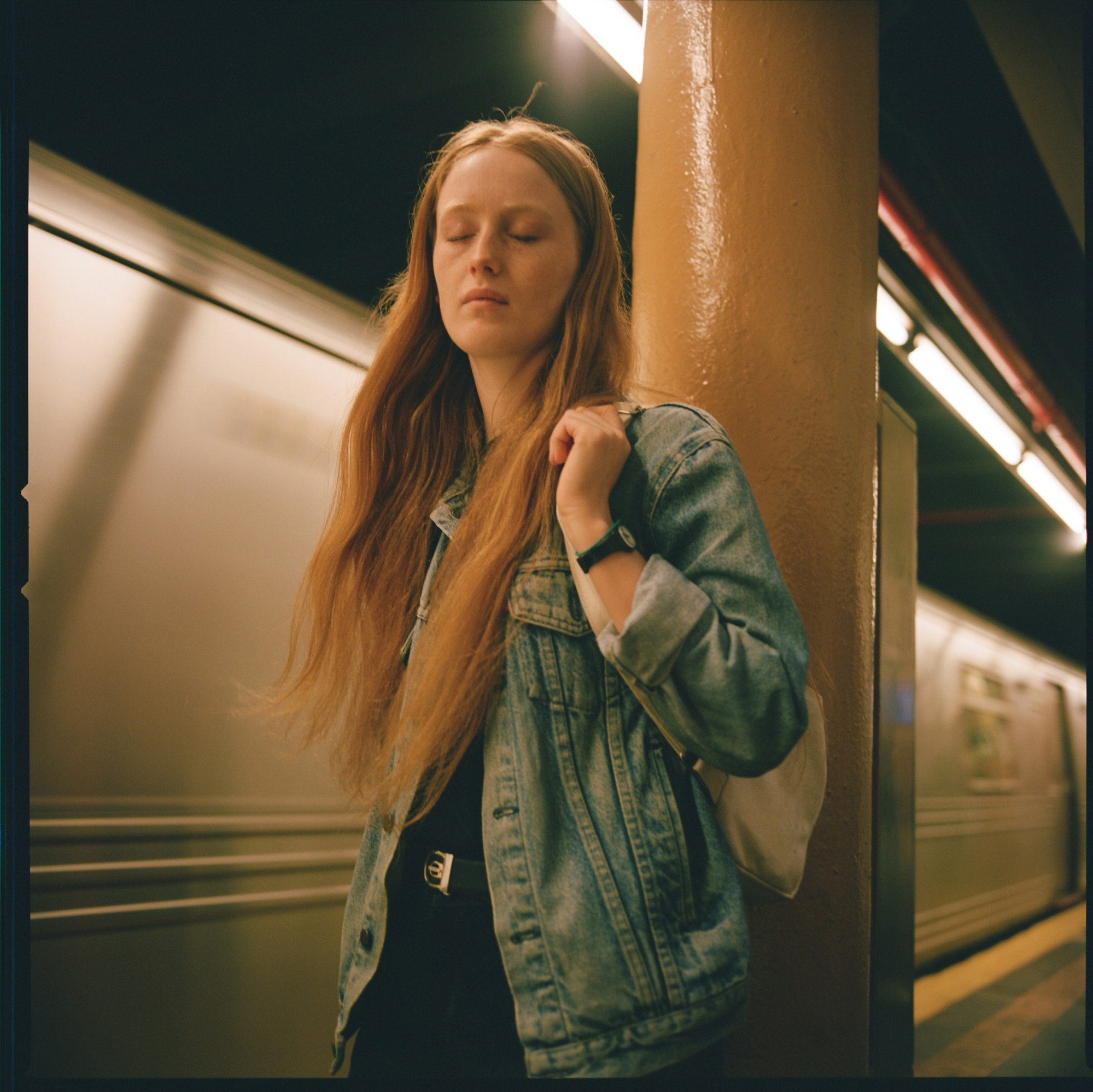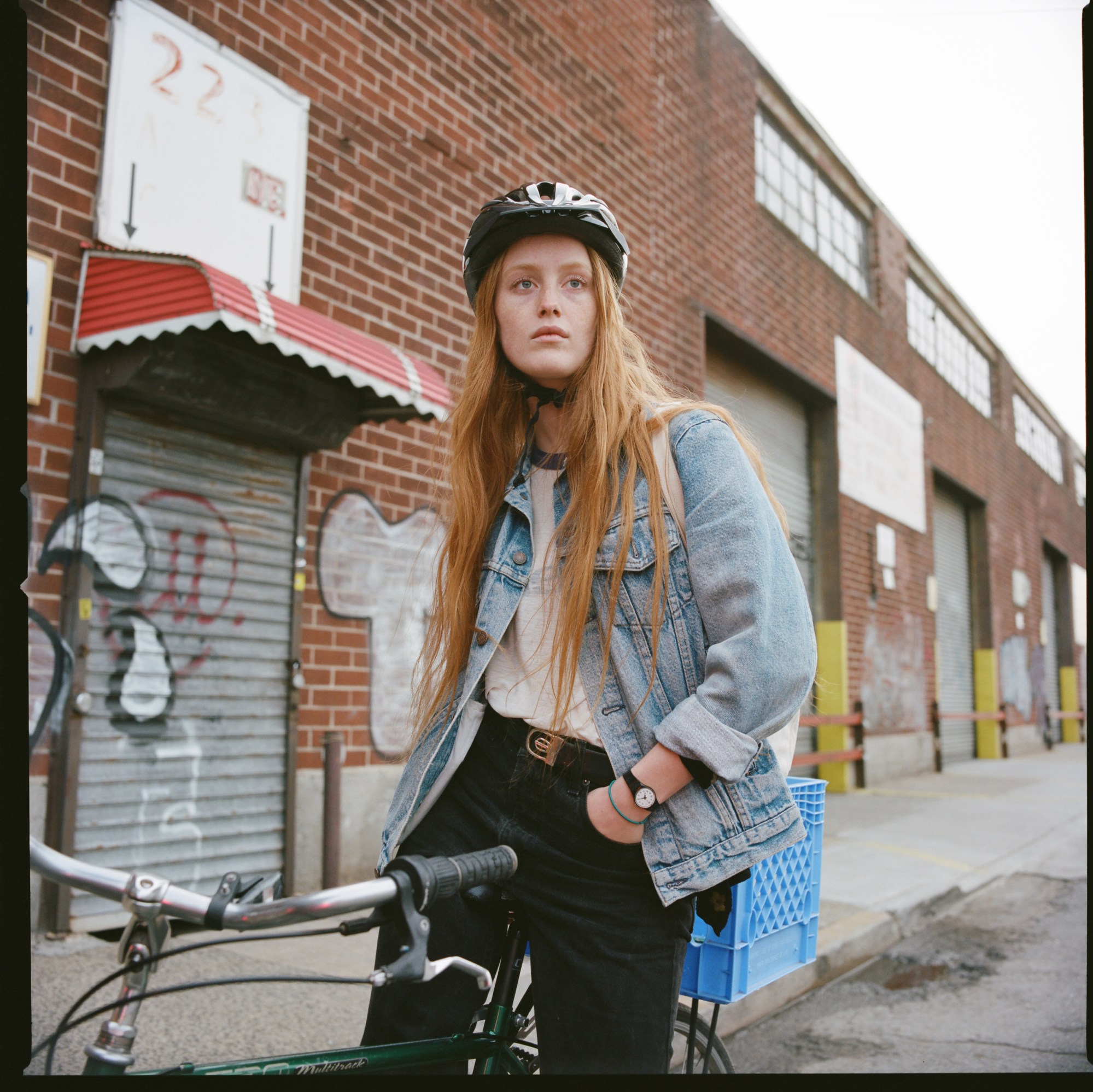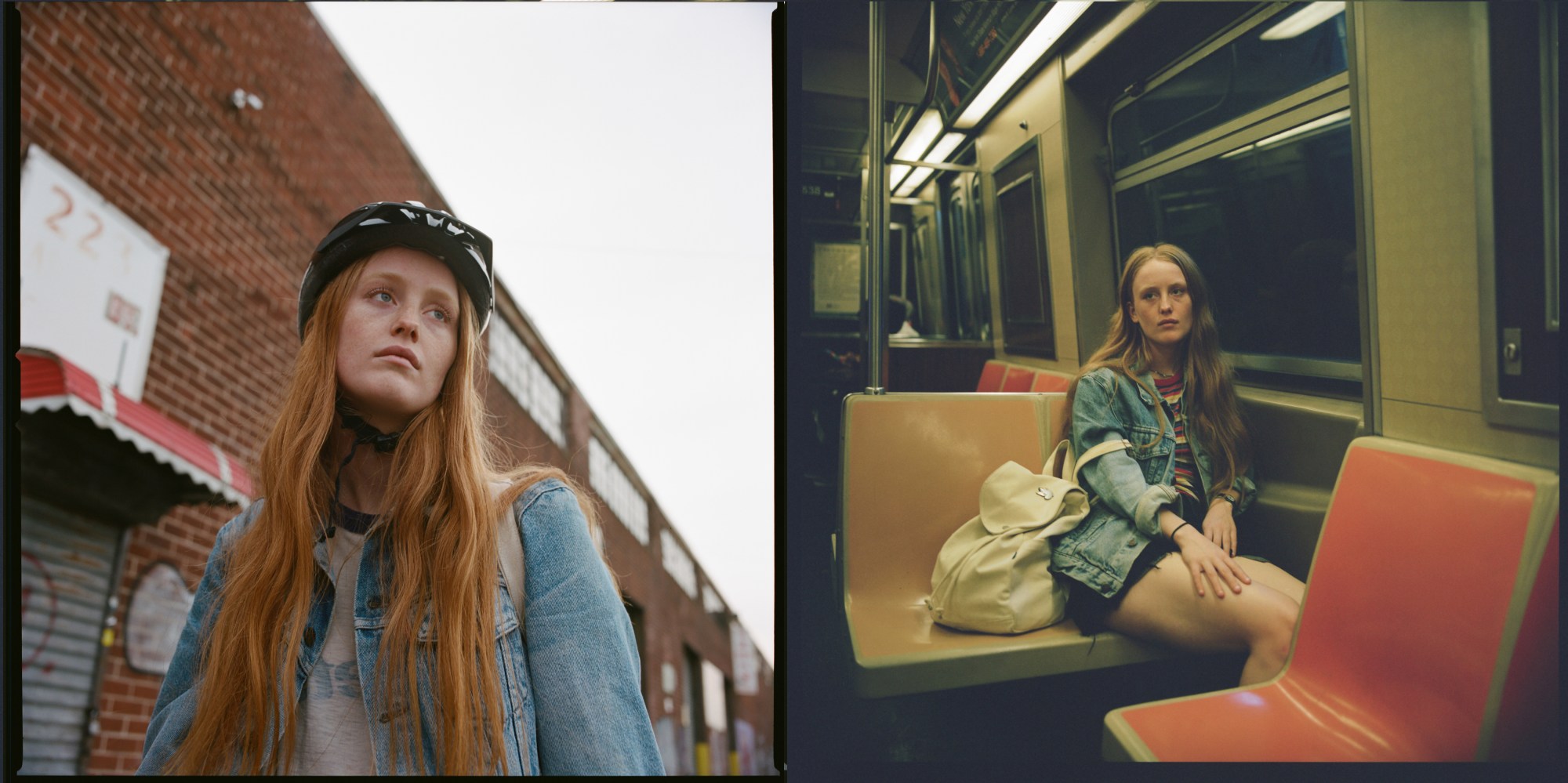Cheer Up Baby, a new short film by Adinah Dancyger starring India Salvor Meñuez, deals with the aftermath of sexual assault in a manner both subtle and overwhelming. We see parts of the event happen on a New York subway car, but what stays with you most is the protagonist’s return to normal life. In particular, in their dance class we see them engaged in consensual closeness with a partner, and you sort of hold your breath as their limbs intertwine. Dancyger communicates a lot of this feeling through sound, preferring nonverbal communication in her films. “The energy of New York was really enraged,” she says of the period when she first started imagining the film. “I thought, “Maybe I just need to release energy, exert some sort of power to release myself and get catharsis. Because the last thing I did [2015’s Chopping Onions] was cathartic in a really quiet way. I’m mad, I don’t really know how to place this, or where it’s coming from, but it’s going to shoot out some way, and it’s going to be in the form of a story.”
i-D talked to Dancyger about the energy of growing up in New York, rage, and channeling some of that into the visual and sonic world of her film, accompanied by exclusive behind-the-scenes photographs by Amber Mahoney.
What was the initial idea that became Cheer Up Baby ?
I think when I go through ideas for stories, it’s about walking around for hours and going, “Where am I right now, what am I thinking about, what’s important to me?” And this story is something that happened to me a long time ago, way prior to #MeToo as a movement as it’s known now. Historically, it’s this thing that’s always been in our consciousness, and I thought, “Maybe this is a part of me I’ve never really dealt with before.” I forgot how much it had an impact on me, and now it’s all coming back in an indirect way because of the injustices I am seeing around me. So it came from that, the image I remembered from that train, and how I felt after, and talking to my friend the next day. Just feeling so disgusted, and disgusting, and so uncomfortable with myself. There was a lot of weird mental effects, especially as I was 17 when it happened. And I needed to distance myself from it to start writing this story.
It was this back and forth, removing myself as Adinah from the story, but also channelling all those emotions into the structure of the story. I feel like I’ve seen a lot of movies about the event itself, not what happens after. So I spent a lot of time figuring out how to present that information — what the day is like after that experience.
What comes across in the film is the cruel, randomness of life, and also how everything in New York happens in public — we live on the street and on public transport. And so, the unsafeness that the character, or you must have felt after the event is kind of devastating.
Totally. I grew up in the city, I was a little rebel because I knew the city so well — or I thought I did. So when something like that happened, I felt like my reality was a little shattered. My perception of the city was a little broken. And I realized that the possibilities were far more than I imagined. Whether it’s intense, or subtle, those things affect everybody. And it was this break with innocence — what do you do with the information. What do you do after your lens has totally shifted, which you can only see once you’ve experience it yourself.

Right, the film seems to be about relearning — we see India’s character Anna go through things that were previously mundane to them, like going to the dance workshop, or their job, or a night time activity. And they’re learning to do those again with their new knowledge.
I guess I was thinking, “What message do I leave off with.” And I don’t know if I have one. It’s about how you deal with it, and move on. The ending of the movie is like, “This is going to happen again, what can you do.” You can’t change other people. How can you take back your authority when you feel like it’s been stripped from you? This story in particular is about someone trying to figure that out before they’re able to. It’s the day after, it’s raw as hell… It’s hard to say, everyone is so different when it comes to that. It’s very hard to describe, and it took me a year to write this, because I didn’t want to fuck it up. I thought, “If this is any form of PSA, this is not what I want to do, and I just want to present some version of what this experience can be for somebody.” The whole thing was so sensitive in the writing.
How did you communicate the feeling to India?
When I started writing, I told them I want to tell this story, and we thought maybe we should work on it together. So from the get-go, before I really understood this character, I knew they were going to be in it. So I started writing a little bit more with this person in mind, and knowing this person so well — we grew up together. A lot of their work is based in the body and body awareness. So I think it came further down the line, after finding out what the story was about. The character was a dancer, and that idea really transformed how to tell the story. Because the whole story, really, is about movement. Everything is sort of moving, whether the protagonist is moving in dance, or on a bike, or on the train, there’s all this motion happening.
Contact was something that we kind of discussed — the prism of contact, and the way it’s used in contact improvisation, where it’s consensual and platonic and intimate. Whereas the touch between you and a sexual partner, is confusing, always. But after this happened [to them], it blends the consensual and the non-consensual to the extent where she doesn’t know where to place the situation yet. So just showing all ways to show contact. That’s why I built a nonverbal way to tell the story, as I just couldn’t imagine a way that dialogue could serve this story in a justifiable way. And it’s just not my nature to communicate with words, ever, as I was a dancer as well.
With the extent to which so much of our communication is now written, it can be hard to show the importance of nonverbal communication. Especially to a younger audience. There are no visual queues from texting.
I think something that scared me off from a lot of dialogue was researching how people share their stories like this online. I have no judgement against how anybody needs to communicate, and tell the world how they feel.

So you turned to nonverbal communication?
A big part of my scripts was writing in sound. This project was a testament to how far I could go with sound design, because it’s something that I’ve always been really interested in. And something I studied in school, this very undervalued tool, that you can use sound to create emotion. Not through music but through volumes of sound. It was like a dance, really, in the edit. I felt like I was choreographing an orchestra in a way. In the train scene I had 20 tracks! I was just throwing things in, and then I cleaned it up. Just before she goes biking, the train gets really loud. And you’re not supposed to acknowledge that, but consciously you feel anxious. So those technical tools become really powerful artistic tones that I really wanted to take advantage of with the story.
Often when I have a scene that’s very dialogue-heavy, I’ll see what I can replace with emotion. How much can I show with as little dialogue as possible? And that’s maybe a stylistic preference, but it’s my way of making work. Something clicked as we were shooting, and I felt like we were developing a language, and should keep going with it. That thought process had multiple lives, from the shooting to the writing to the editing. It was just putting these things together and realizing I don’t have control over it — this is what it wants to be. And trying to accommodate that.
Have you got in mind what you want to do next?
The amount of effort and time that Cheer Up was, I’m ready to put that into a feature!
